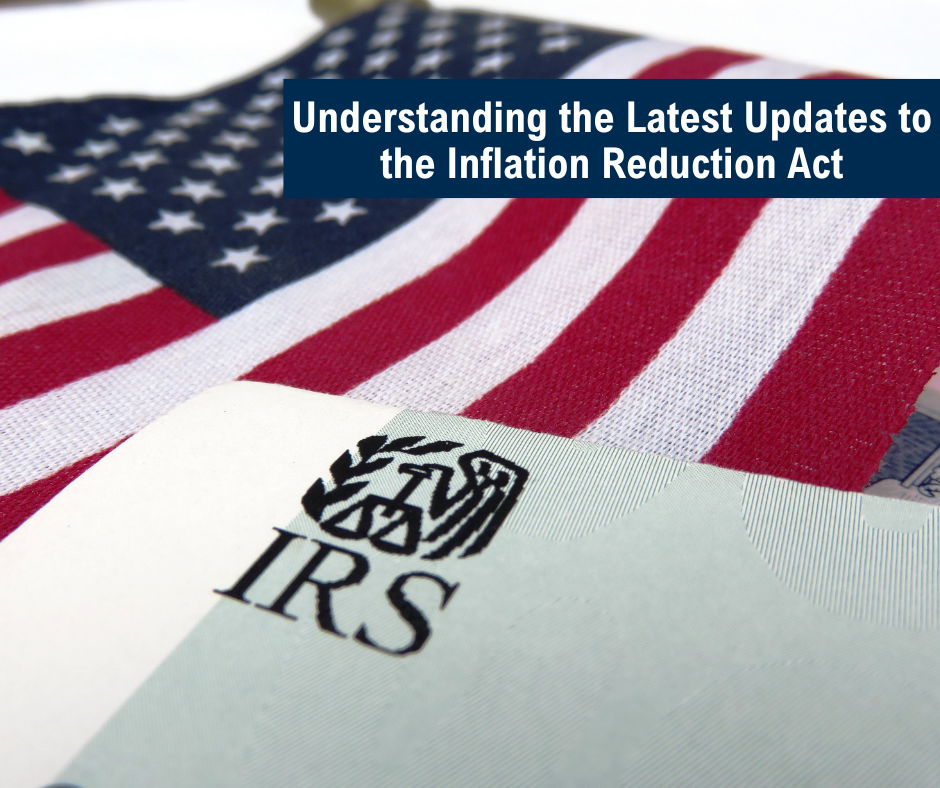
News & Blog
Understanding the Latest IRS Updates to the Inflation Reduction Act’s Domestic Content Bonus Credit

Understanding the Latest IRS Updates to the Inflation Reduction Act’s Domestic Content Bonus Credit
The Inflation Reduction Act (IRA) continues to evolve, and with it, the rules for earning valuable tax incentives for clean energy projects. The IRS has recently released two important updates to its original guidance—Notice 2024-41 and Notice 2025-8—that refine how developers and manufacturers can qualify for the IRA’s domestic content bonus credit. These updates are designed to simplify compliance, improve market alignment, and expand eligibility for more clean energy technologies.
Below is a breakdown of what has changed and what it means for the industry.
Background: Notice 2023-38
When Notice 2023-38 was issued in May 2023, it laid the groundwork for how energy projects could qualify for the IRA’s domestic content bonus credits. The requirements included:
- Using U.S.-sourced steel, iron, and manufactured products in qualifying projects.
- Establishing a “safe harbor” list that classified components for projects such as utility-scale solar PV systems, wind facilities, and battery storage.
- Requiring developers to use manufacturer-provided direct cost data to prove compliance.
This notice marked the first step in clarifying how renewable energy developers could tap into the additional domestic content incentives.
Notice 2024-41: Simplification and Expansion
Released in May 2024, Notice 2024-41 introduced several key improvements to the framework:
- Elective Safe Harbor: Instead of relying solely on manufacturer cost data, taxpayers can now use assigned cost percentages for certain components. This makes the compliance process more straightforward and predictable.
- Expanded Project Types: The safe harbor was broadened to include hydropower and pumped hydropower storage facilities, widening the scope of eligible projects.
- Clarified Solar PV Classification: The solar project category was updated from “utility-scale photovoltaic system” to the broader “ground-mount and rooftop photovoltaic system.”
- Call for Feedback: The IRS and Treasury requested industry comments to guide future refinements.
Notice 2025-8: Refinement and Alignment
In January 2025, Notice 2025-8 built on the elective safe harbor introduced in 2024, incorporating analysis and recommendations from the U.S. Department of Energy. Key changes included:
- Updated Default Values: The assigned cost percentages for certain components were revised to better reflect actual market conditions.
- Improved Market Alignment: These adjustments were designed to ensure the safe harbor remains practical and realistic as technologies evolve.
- Battery Energy Storage Systems (BESS): The notice provided specific updated cost percentages for BESS projects, a recognition of their growing role in clean energy infrastructure.
At a Glance: Comparing the Updates
|
Feature |
Notice 2023-38 (Initial) |
Notice 2024-41 (First Update) |
Notice 2025-8 (Second Update) |
|
Calculation Method |
Required use of manufacturer’s direct costs |
Introduced elective safe harbor with assigned cost percentages |
Updated elective safe harbor with improved assigned cost percentages |
|
Project Types |
Covered solar PV, wind, and battery storage |
Expanded to include hydropower and pumped storage |
Refined percentages, especially for BESS |
|
Component Classification |
Provided safe harbor list for components |
Updated solar PV category; added new project types |
Improved default values for more accurate calculations |
Why These Updates Matter
For developers, contractors, and manufacturers, these updates provide:
- Greater Clarity: More project types and clearer classifications mean fewer uncertainties during planning.
- Administrative Relief: Elective safe harbors reduce the burden of tracking manufacturer cost data for every component.
- Market Responsiveness: By aligning default values with DOE analysis, the rules now better reflect the realities of today’s clean energy projects.
Final Thoughts
As the domestic content rules under the IRA continue to evolve, staying informed is critical for project planning and compliance. At Solar Foundations USA, we design and manufacture U.S.-made, domestically certified racking solutions that help projects qualify for these incentives—while delivering the strength and reliability installers depend on.
The IRS’s evolving guidance reflects the growing recognition that American manufacturing and renewable energy development go hand-in-hand. By keeping pace with these updates, project owners and developers can maximize their benefits while building a cleaner, more sustainable energy future.




